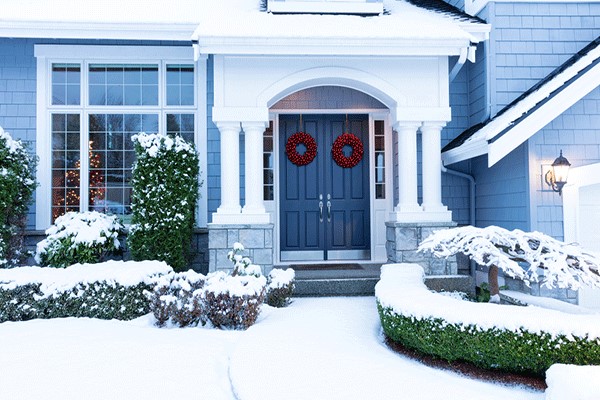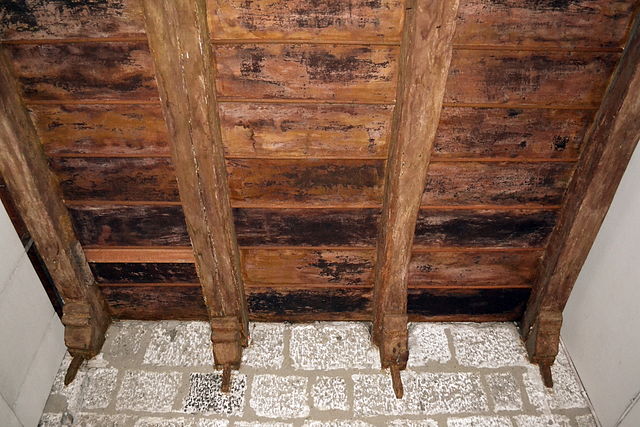6 Ways to Prepare Your Home’s Exterior for Winter
Finally, it is the end of the year. We all are set to welcome the winter season. However, we need to prepare our home’s exterior for the tough rains, snowfall, and chilly winds.
Let us learn some key tips for preparing our home to deal with an upcoming winter season:
1- Check Your Roof
Water leakage can occur in heavy rainfall or after a few months of snowfall. The thick sheet of ice on your roof can melt anytime, resulting in water leakage. This can cause serious water damage to furniture and home appliances. For this, you need to thoroughly check the roof when it is completely clean.
You should also contact a weatherization expert for a professional checkup. The professional will check for holes, damage, or tiny missing pieces that can cause the roof to leak in windy storms. If your roof is in worse condition, you should call a professional roofer and get it repaired.
Additionally, check the seals, as the breaks given in seals often get damaged easily. Besides this, do not let pine needles and leaves sit on the roof. This is especially important for flat roofs. It is because leaves will hold moisture, making your roof incompetent to face the tough winters.
2- Cover the Door and Window Gap
Have a detailed check of your windows and doors. If you find any gap in them, be sure to cover it. Use the best quality exterior caulk for this. Silicone caulk is a good option as it won’t shrink and will hold its shape even in the rain.
You can use plain or colored caulk, depending on the color of your windows, doors, and sliders. Use a gun or cartridge for application. This will help you in caulking perfectly without any gap. Also, make sure that the surface is clean before you apply the caulk.
You should remove the stains of old caulk or paint with a scrub and warm water before you install the new caulk. The surface should be perfectly dry. Moisture can badly damage the effect of caulking. That is why experts recommend doing rubber or silicone caulking before the winter season.
3- Check Exterior Faucets
One cause of pipes bursting in the winter is the undrained water. This happens in the exterior faucets or the faucets of your garden. Check thoroughly for the undrained water and try to drain it completely. If water is left, it will freeze in the winter, and when the ice expands, pipes will burst and you’ll need flood cleanup services right away.
As a result, tons of water will enter your house. For this, you need to disconnect the hoses. You can easily open hoses with the help of some plumbing tools. If you do not have such tools at home, buy them or call a plumber to do the job. As an additional precaution, shut off the value for the exterior faucets. You can also replace the faucets with frost-proof faucets for long-term safety.
4- Check and Clean Gutters
Before the winter during autumn, leaves gather inside the gutters, becoming a big reason for the blockage and water damage on the side of the house. Be sure to remove all the leaves so that water can easily flow. Use a garden hose for pressure washing. In this way, you can check if the gutter is working properly or not.
However, if there is a lot of buildups, you can use a scoop. You can also cover your hands with disposable gloves and remove the debris. Once all the debris is removed, inspect carefully for leakage, cracks, and small damage. If there are extra clogs and damage, call a professional.
5- Drain the Garden Irrigation System
If proper measures are not taken, the extreme winter weather can damage irrigation systems in your garden. Therefore, be sure to shut off the main supply. Besides this, do not forget to cover the valves as freezing temperatures can damage them badly.
Cover the valves with a plastic bag and lock it with an insulationInsulation is a material used in buildings to reduce the tra... More tape. Also, cover all piping lines above the ground. Insulating foam tubes and tapes commonly available at general stores are perfect for this.
However, in the case of an automatic system, remember to shut down the control system. For an additional precaution, detach the main wires. In the end, drain all pipes properly. If you are unsure about safety, contact a specialist. Many irrigation specialists are already in high demand these days for winter services. So, book an appointment before it’s too late.
6- Prepare Your Lawn
If your lawn has been covered with a thick carpet of fall leaves, it’s time for some good-old raking. Small chopped leaves are ideal for serving the lawn in the winter season. However, if there are chances of heavy snowfall in your area, remove all leaves before they get under a thick layer of ice.
Similarly, trimTrim is the decorative or functional molding used to finish ... More your grass shorter right before winters. Experts also recommend overseeding in the autumn season. This helps in the preventionPrevention refers to actions taken to reduce the likelihood ... More of weed growth. If you have collected the autumn leaves, do not throw them away. Keep them safe for the winter mulch. Buy a good quantity of organic matter such as bone meal, greensand, manure, etc.
Lastly, pay special attention to the compost pile. It works even in the winter season if a good internal temperature is maintained. Insulate it with a layer of dried leaves. This method will help in keeping the pile dry.
Bonus Tip
Besides doing all the preparations for the exterior, make sure you finish your interior cleaning work before the chilly season. Tasks such as carpet cleaning, curtain cleaning, and furniture cleaning should be taken care of before the cold spell dawns.
Wrapping It Up
In short, the winter season requires a lot of homework. In comparison to the interior, the exterior of the house is directly exposed to snow and rain. Therefore, a lot of safety measures are mandatory. Some basic ways for protecting the exterior of your house in winters include repairing the roof, caulking windows, checking faucets, cleaning gutters, draining the irrigation system, and preparing the lawn.













